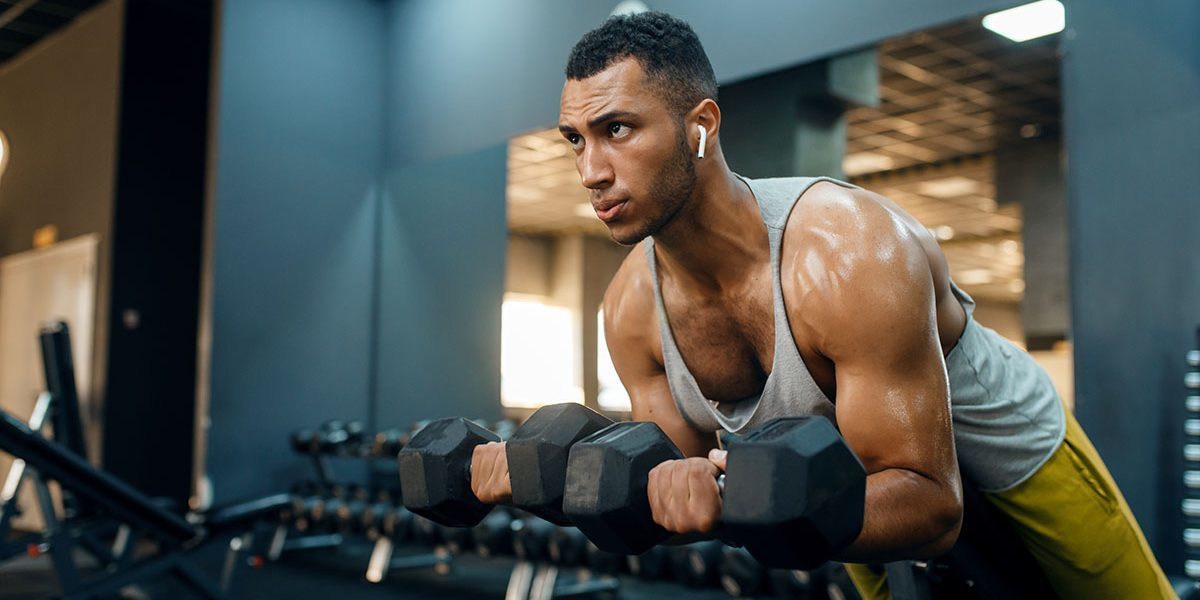If your goal is to get wider and thicker arms, training your biceps regularly with proper form is absolutely crucial.
However, many people make the mistake of not adding enough variety in their biceps workout routine, going through the same exercises over and over again.
Despite their best efforts, this usually results in diminishing results over time.
To prevent hitting plateaus and build muscle mass more effectively, you need to understand the basic bicep anatomy and the impact of the different types of exercises on the quality of your training.
This is why in this article, we decided to write about the 5 biceps exercises for anyone who is looking to get bigger arms and a better physique. Keep reading!
There are two distinct heads to the bicep muscle: long head (located on the inside of the arm) and short head (located on the outside). Both heads work together as a single muscle. However, their growth is heavily influenced by individual exercise selection.
In other words, some exercises are more suitable for developing the long head while the others work best for the short head.
Therefore, if you are lacking definition in one of those parts, it’s very likely that you haven’t been putting enough attention to creating a balanced training plan. This has a negative impact not only on your bicep growth but also on the overall look and strength of your arms.
If that’s the case, we recommend identifying the weaker part of your biceps and prioritising the exercises that target that area.
Not sure what those are? This is what we are going to cover in the next part of this article.
A classic bicep exercise that’s key to developing bigger arms, improving your grip strength, and getting stronger with other essential movements such as deadlifts.
Not only is this exercise relatively easy to perform, but it also provides you with flexibility in terms of which head you want to target.
As a rule of thumb, wide grip works best for the short head while the narrow grip targets mainly the long head.
Two things to avoid when performing this exercise are unnecessary swinging (a little cheating at the end of each set is fine), and lifting so heavy that you can’t control the movement.
In addition to that, you also want to make sure to maximise the time under tension when you go down.
As with the other biceps exercises, keeping the right form is everything.
Here’s how to do barbell bicep curls correctly:
- Stand up tall with your shoulders back
- Curl weight toward the chest and squeeze your biceps at the top
- Go all the way down while keeping the tension on your biceps
- Repeat
Chin-ups are one of the most effective biceps exercises focused mainly on the development of the short head of your biceps. Additionally, chin-ups also contribute to improved grip strength and posture.
Although difficult, this exercise is great for building bigger arms and mastering your bodyweight which is key to maintaining good physical health and ensuring progressive improvement in strength training.
If you’re lacking growth in the short head of your biceps, we suggest that you add chin-ups (along with the spider curls and preacher curls) to your biceps training routine to start seeing better results faster.
The spider curls target the short head of your biceps and are performed face down on either an incline bench or on the preacher bench. They require a strict form.
Unlike chin-ups which can be classified as a compound movement, spider curls work your biceps in isolation, adding details and definition to your arms.
Spider curls can be included as a burnout movement at the end of your routine and performed in the range of 8 to 12 reps and more.
The main things to keep in mind when performing spider curls are working at the right angle (don’t lift your shoulders), and squeezing your biceps hard at the top of the movement.
The incline dumbbell curl is a variation of the dumbbell curl and an exercise that targets the long head of your biceps (as a direct opposite to the spider curls).
The main benefit of this exercise is that working your biceps under the 45-degree angle allows a greater time under tension than if you would just be doing the standard double curls. This results in tighter contraction and deeper stretch.
Ideally, including this exercise in your routine should help you with adding that extra bit of variety that’s needed for achieving results when training your biceps regularly every week.
As we have said in the beginning – when it comes to biceps training, it’s usually not the intensity, but rather the lack of variety that prevents muscle growth.
The final exercise works mainly the brachialis muscle which lies underneath the long head of the biceps.
Its focus on the brachialis muscle is the main reason we’ve added it to this article; it’s great for building bigger arms and thicker biceps.
Reverse barbell curls are performed with an overhand grip and can be used as an ideal high-rep finishing move.
To ensure you do this exercise correctly, we suggest focusing on using the full range of motion, performing slow and controlled reps, and moving only your elbows (arms should remain completely still).
Need help with perfecting your form to get bigger biceps and stronger arms? Delta Fitness is a personal training studio based in Canary Wharf, East London.
We pride ourselves on creating the optimal environment to help you get the body you want without any distractions. We believe in delivering results in the shortest amount of time, and we are fully committed to helping our clients in the best way we can.
Want to know more? Book a free first consultation.

